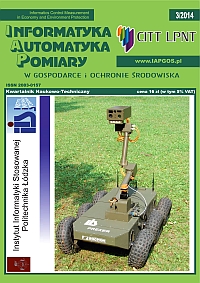IDENTYFIKACJA BAKTERII W WIDMIE BLISKIEJ PODCZERWIENI
##plugins.themes.bootstrap3.article.main##
DOI
Authors
Abstrakt
Identyfikacja mikroorganizmów, głównie identyfikacja bakterii i wykrywanie patogenów jest niezwykle istotnym zagadnieniem w wielu dziedzinach mikrobiologii takich jak: diagnozowanie infekcji czy ochrona żywności. W tym artykule dokonano identyfikacji filtracji z pomocą bliskiej podczerwieni (długość fali od 900 nm do 2500 nm). Sprawdzono różne techniki klasyfikacji (CVA, ANN …). Osiągnięto 100% dokładność na ograniczonej liczbie próbek. Spektroskopia bliskiej podczerwieni (NIR) wydaje się być właściwą metodą do szybkiej identyfikacji bakterii. Metoda ta może być użyta do zabezpieczania żywności, w mikrobiologii, w walce przeciw bio-terroryzmowi, a także w badaniach środowiska.
Słowa kluczowe:
obrazowanie w podczerwieni, spektroskopia, komórki, absorpcja, spektroskopia bliskiej podczerwieni
##plugins.themes.bootstrap3.article.details##
Krepelka, P., Pérez-Rodríguez, F., & Bartusek, K. (2014). IDENTYFIKACJA BAKTERII W WIDMIE BLISKIEJ PODCZERWIENI. Informatyka, Automatyka, Pomiary W Gospodarce I Ochronie Środowiska, 4(3), 58–60. https://doi.org/10.5604/20830157.1121369







